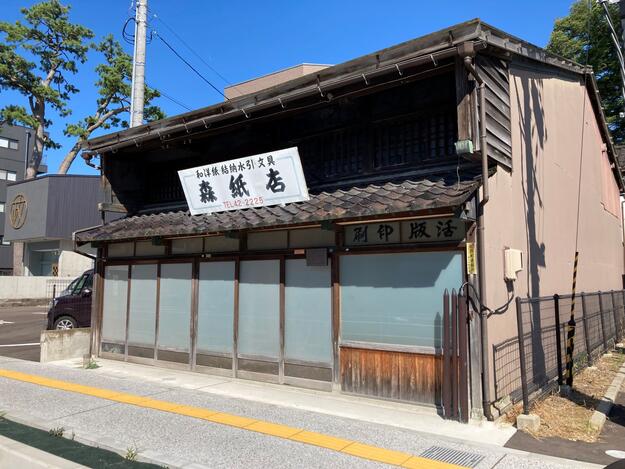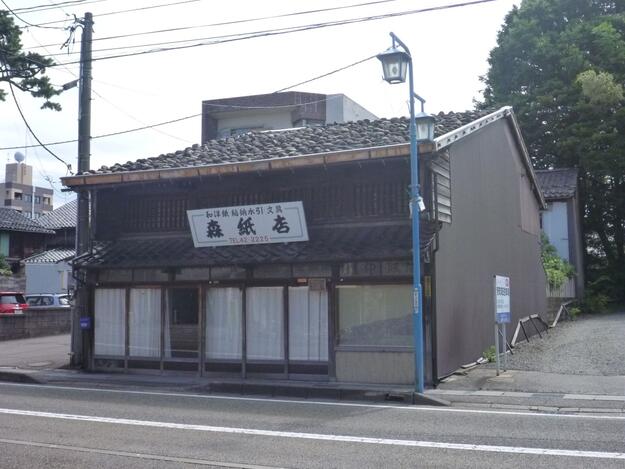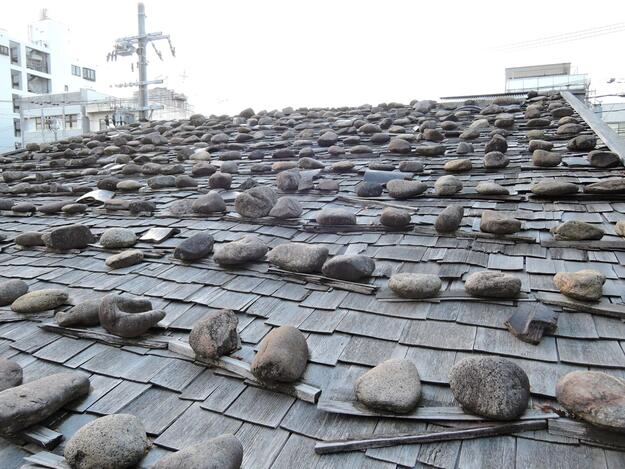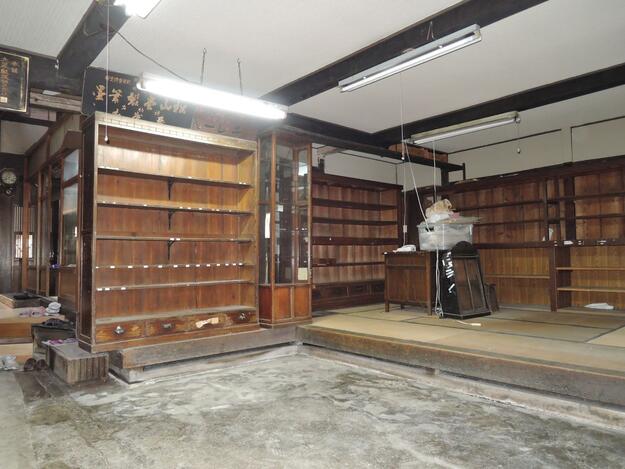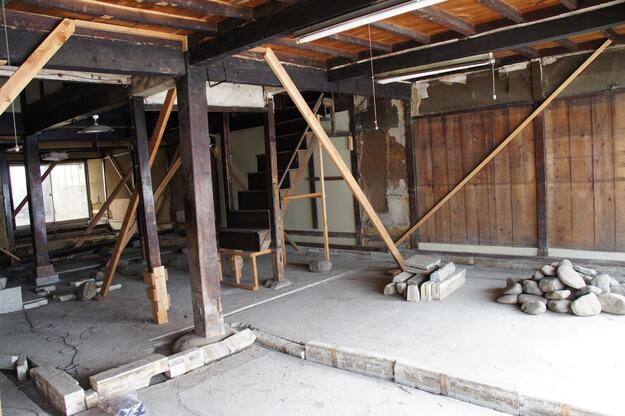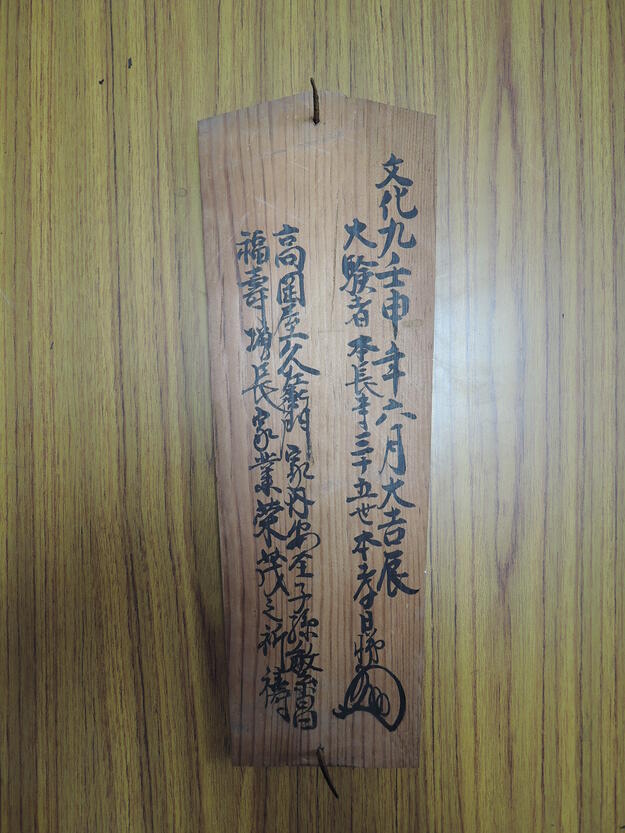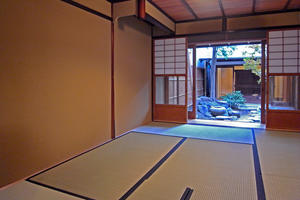Old Mori Paper Machiya
Site History and Significance
About Kanazawa City
A renowned culture-led creative city, Kanazawa City is the capital city of Ishikawa Prefecture in the Hokuriku region (the Japan Sea coastal provinces in the northeast of Kyoto).
The area’s temperate and rainy climate, in addition to the city’s cultural background as a castle town, allowed for the development of Kanazawa’s distinctive products, including rice, sake, and sweets. The city’s historic cityscape is diverse, and includes structures ranging from Kanazawa Castle and Kenroku-en Park to preserved districts of samurai houses, temples, and machiya, or traditional wooden townhouses. Before the COVID-19 pandemic, thee combination of the city’s rich tangible and intangible heritage attracted about eight million visitors, both national and international, annually.
A Traditional Japanese Paper Merchant Townhouse
The Old Mori Paper Machiya in Kanazawa is presumed to have been built in the late Edo period (lasting from the seventeenth to the nineteenth century) by a merchant selling salt and dry foods. In the middle of the Meiji period (late nineteenth century), the machiya was purchased by the Mori Family and turned into a paper store. The production of Washi, traditional Japanese paper, thrived in the region from the Edo period up until the mid-twentieth century, with strong demand stemming from the paper’s various uses, including in many traditional arts and crafts such as Kanazawa gold leaf production.
The Old Mori Paper Machiya structure reflects the two-story wooden architecture of the machiya style, with the shop and residential spaces on the ground floor facing the tori-niwa corridor. It is the only surviving machiya in the central part of Kanazawa city with a stone-standing board roof —shingled or tiled roofs were only built for samurai warriors in the Edo period.
Although designated as historic building in 1983, the Mori family lived in the Old Mori Paper Machiya until 2015, when it was donated to Kanazawa City. Since then, the building has been vacant. The site sits facing a major street with high traffic and was moved back 19.7 feet (6 meters) in 2016 through a traditional Hikiya relocation to accommodate road expansion. Kanazawa City’s plans for the machiya includes reuse of the building for the benefit of the local community.
Our Involvement
Designing a Viable Use for the Site toward Its Sustainable Preservation
In May 2022, WMF launched the Old Mori Paper Machiya preservation project in partnership with Kanazawa City, aiming to design a viable use of the site and build a firm foundation for its sustainable preservation in and after the COVID-19 pandemic. Starting with a collaborative effort to identify stakeholders and build a taskforce ensuring that the site’s reuse reflects community consensus, the project will include the formulation of restoration and site operations plans toward the physical restoration of the house. It is expected to be completed in 2025.
Learn More
World Monuments Fund safeguards cultural heritage around the globe, ensuring our treasured places are preserved for present and future generations.
Sign up for our newsletter to receive regular updates on our projects, stories from the field, upcoming events, and more!
![]()
World Monuments Fund’s work at the Old Mori Paper Machiya has been made possible, in part, by support from The Freeman Foundation.

